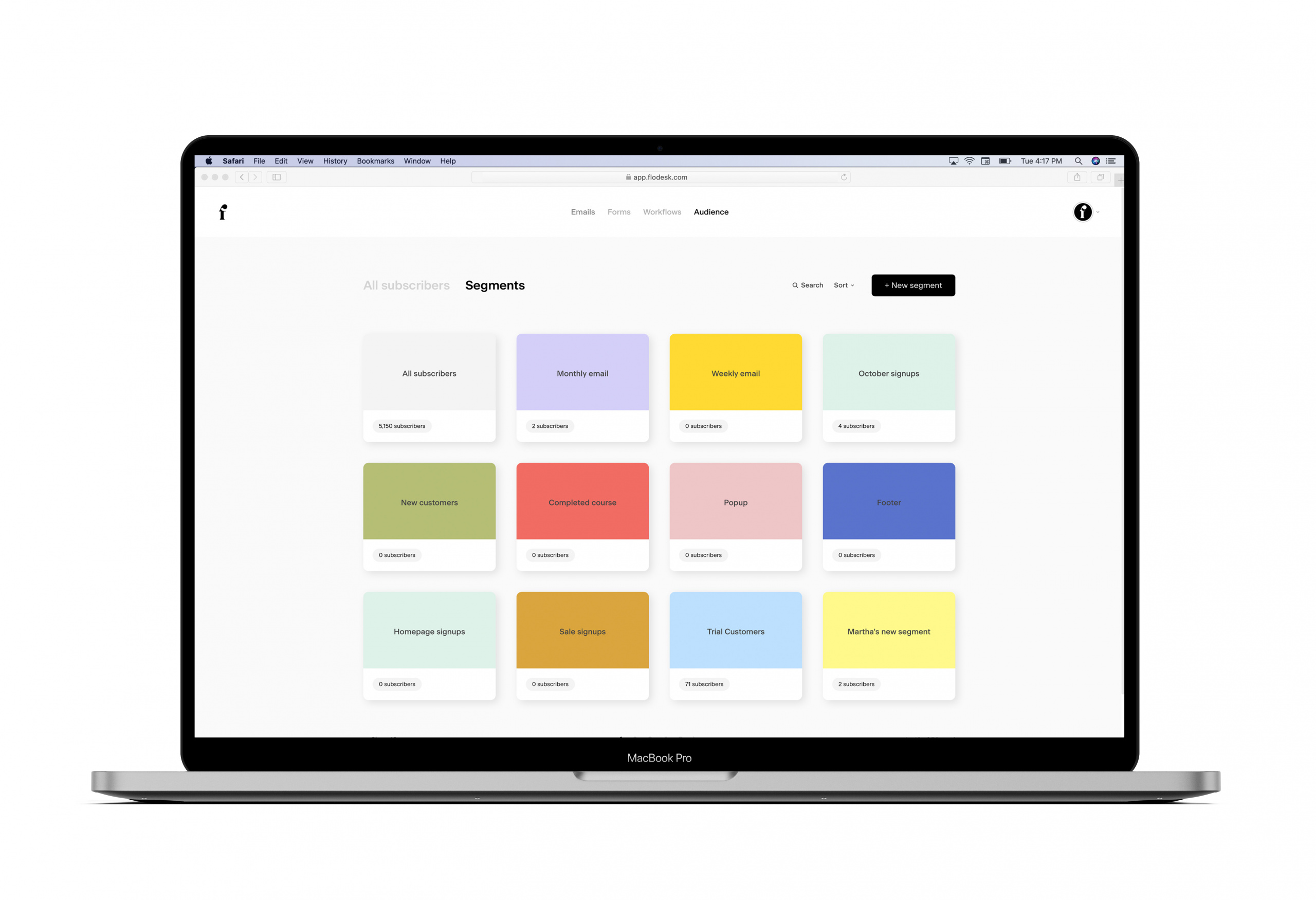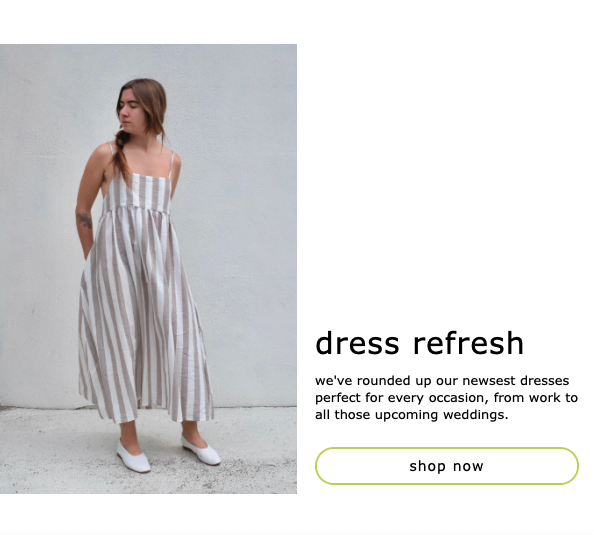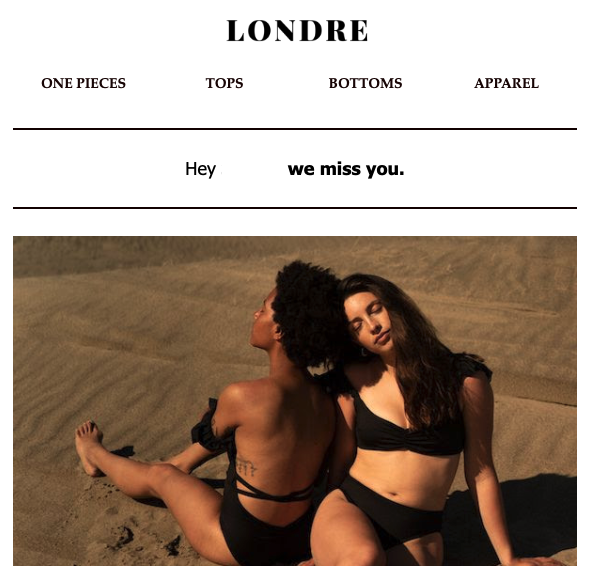11 Email list management best practices for business growth in 2024
Table of Contents Jump to:
Jump to:
Table of contents
Brands put tons of effort into generating leads and growing their audiences. However, many email marketers exclusively focus on seeing their subscriber count grow and forget all about the maintenance that a healthy email list requires.
We’re here to help you get the most out of your email marketing strategy with excellent email list management. If you aren’t already familiar with it, we promise it’s more straightforward than it sounds.
Discover what actions to take for great email list management, the advantages it can offer, and our top 11 most email list management best practices:
- Be transparent when subscribers opt-in
- Set up a double opt-in process
- Embrace tagging and segmentation
- Put together a welcome series for new subscribers
- Send personalized email content
- Use a top-notch email list management software
- Clean up your subscriber list regularly
- Create re-engagement campaigns
- Let subscribers manage their preferences
- Don’t make unsubscribing complicated
- Encourage subscribers to get in touch with you
What is email list management?
Email list management is a strategy that includes managing, organizing, and optimizing your subscribers to keep your list engaged, lean, and in great shape over time. Effectively managing your email subscribers list is fundamental to a healthy email marketing strategy. It guarantees targeted emails, effective segmentation, and a clean list devoid of inactive subscribers.
Why manage your email list?
Email list management is a highly effective way to get the most out of your email marketing budget and build a high-quality subscriber list that will drive business growth over time. Here are a few of the biggest benefits:
- Reduce costs: Many email marketing platforms (other than Flodesk, of course) price their plans according to how many subscribers you have on your list. Maintaining a healthy email list can help make sure you’re only paying for contacts who engage with your business
- Higher levels of engagement: Better engagement means more enjoyable, interactive relationships with your customers and a much lower likelihood of your emails getting filtered as spam
- Get to know your subscribers better: This will help you understand how you can optimize your products and services and send out content that better serves your customers
- Enjoy more accurate analytics: If you have a largely inactive subscriber list, it’s harder to understand how your emails are really performing. It’s crucial to learn whether your performance is due to general disengagement or something specific you did that missed the mark
11 effective email list management best practices
There are many actions you can take to keep your email list healthy, but here are the 11 best practices we think are most impactful.
1. Be transparent when subscribers opt-in
Communicate what kind of content people can expect from your email list before they even opt-in. That way, they’ll understand exactly what they’re signing up for and make an informed decision about whether they want to do so or not.
Many people hit unsubscribe because they get emails that aren’t in line with what they were expecting or what’s relevant to them. Avoid that problem by telling people what they can expect from you up front. Better yet, let subscribers choose what they’re interested in (and how often they want to hear about it) with Form Preferences.
This opt-in form template shows how you can tell your audience what kind of content you’ll be sending out while still encouraging them to opt in: “Join my regular newsletter to learn something new each week about building a sustainable business you’re truly excited about!”
2. Set up a double opt-in process
A double opt-in process means that potential subscribers will have to complete two steps to successfully join your contact list.
Usually, your leads will sign up for your email newsletter with a signup form, landing page, or pop-up. If you have a double opt-in strategy set up, they’ll receive an email after they submit the information that asks them to confirm their email address and grants explicit permission to add them to your subscriber list.
While email marketers debate the effectiveness of single vs. double opt-ins, one thing’s clear—double opt-ins normally result in higher-quality contacts, more engaged email lists, and fewer complaints or unsubscribes.
Tagging and segmenting your subscribers is one of the best ways to consistently send people relevant, personalized email marketing content.
In case you aren’t already familiar with these terms, let’s dive into some definitions.
Segments: How you split up your entire contact list based on their relationship with your brand. Some common examples include:
- Leads vs. new customers vs. loyal customers
- Interest in specific products or services (For example, a fitness studio might have segments for yoga students, pilates students, HIIT students, and so on)
- Where customers subscribe to your email list (pop-up form, freebie opt-in, and more)
Contact tags: Get even more specific about customer behavior by adding additional filters to your segments. For instance:
- Engaged vs. unengaged subscribers
- Subscribers whose actions (like clicking on button links) show specific interests
- Subscribers who opened your last email vs. subscribers who didn’t
4. Put together a welcome series for new subscribers
A welcome series email campaign are multiple emails that companies send to new subscribers as soon as they opt-in to their email marketing list.
Welcome emails are a great way to start your relationship with new contacts and set the stage for high engagement.
Follow these best practices to send out fantastic welcome campaigns:
- Embrace automation: Make sure you automate your welcome series so your subscribers receive the right messages at the right time
- Design welcome emails that are consistent with company branding: Your email marketing content is an extension of your brand experience, so keep your logo, fonts, imagery, design style, color palette, and tone of voice consistent with the rest of your online presence
- Send a welcome gift: Some popular gifts for joining an email list include discount codes, freebies, and downloadable resources
Get further inspiration from our top 15 welcome email tips and examples.
5. Send personalized email content
A little personalization can go a long way. Sending personalized emails allows you to send useful, relevant messages to your subscribers.
For example, the Canadian boutique Ad hoc sends subscribers emails with curated content based on their browsing history. Whoever received the email pictured above was looking at the dresses on their website, so it’s likely they found this targeted content informative and helpful.
Here are some other dynamic ways to personalize email content:
- Refer to your subscribers by name
- Send targeted emails based on milestones, like birthdays and customer anniversaries
- Trigger browsing history-based emails, like abandoned carts and cross-sales
- Set up different email marketing segments based on customer interests and preferences
6. Use a top-notch email list management software
Choosing an excellent email marketing platform is one of the best things you can do to seamlessly manage your subscribers. High-quality platforms like Flodesk have built-in features that make it easy to keep your email list in shape while ensuring your marketing is brilliant and beautiful. .
Here’s how Flodesk helps with list management:
- Stunning, intuitive form templates for seamless lead generation
- Optimal email deliverability rates
- Email marketing templates designed for welcome and re-engagement campaigns
- Comprehensive reports and analytics to hone in on metrics like bounce rates, unsubscribes, and opens by device
- Segments and tags to organize your subscribers and send personalized content
- The ability to set up powerful email marketing automations based on customer behavior
- Countless educational resources, like Flodesk University and the Flodesk Help Center, to help you build your subscriber list
Test us out
Flodesk’s 30-day free trial enables you to explore our list management tools and stunning templates, stress-free!
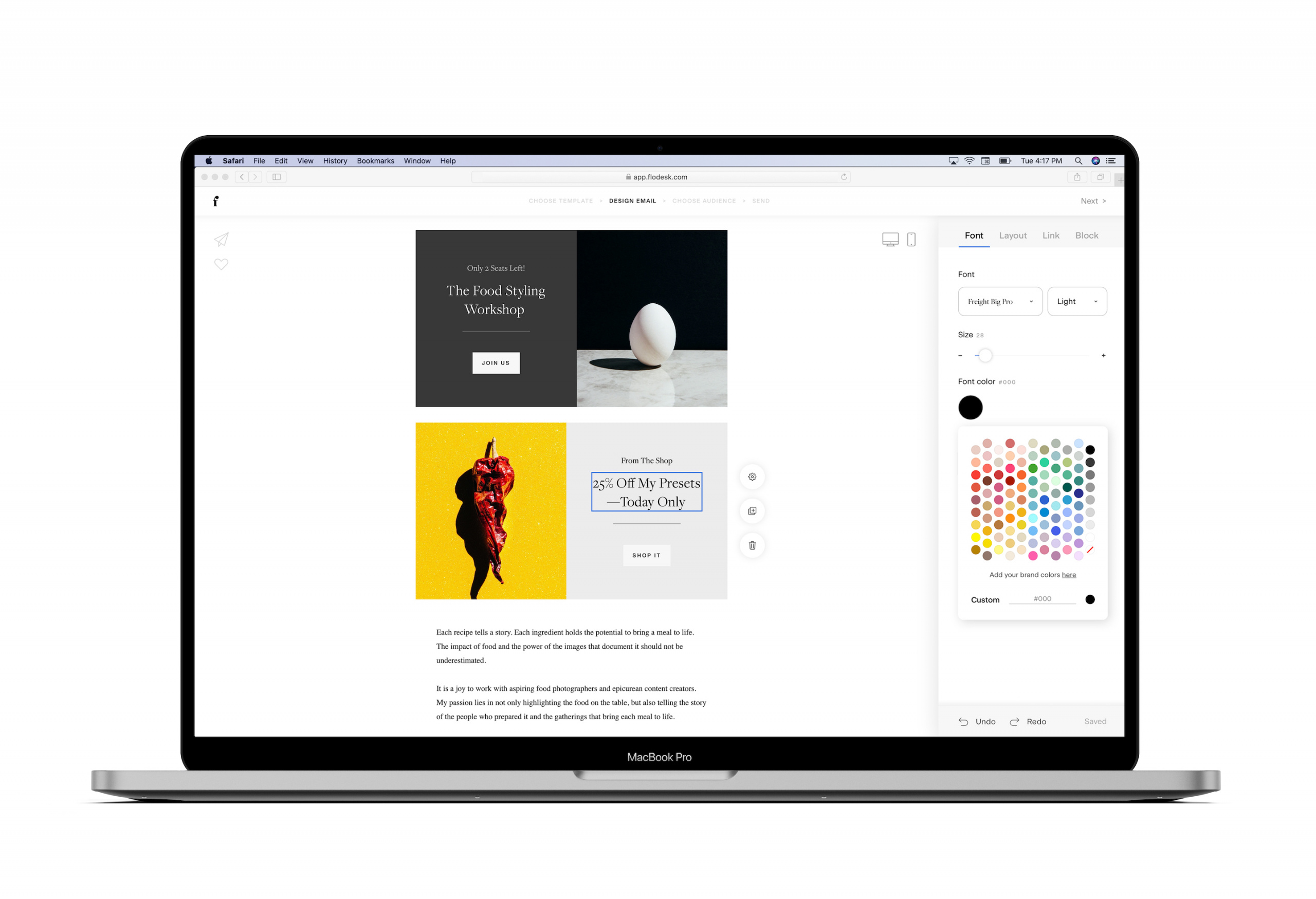
7. Clean up your subscriber list regularly
Just like everything in life, subscriber lists need a deep clean every once in a while. Here are a few actions you should make a habit of to keep your email list in great shape:
- Send targeted emails to unengaged subscribers to pique their interest again
- Ask subscribers to update their email preferences to make sure they’re receiving content they enjoy
- Remove emails that have documented hard bounces as they are likely invalid or inactive
- Prompt contacts who never open your emails to unsubscribe or remove them altogether
8. Create re-engagement campaigns
Many brands send out re-engagement campaigns to reactivate unengaged subscribers and remind them of everything their business has to offer. These are great for boosting sales, but they’re equally good list management tools.
Re-engagement email marketing campaigns make sure that the subscribers on your email list are as engaged as possible. Studies show that it’s 5x more expensive to generate new leads than to re-engage existing ones, so do your best to keep contacts engaged and interested in your business.
Londre Bodywear is a Vancouver-based sustainable swimwear company that sends simple, effective re-engagement emails, like the example pictured above, when a customer hasn’t made a purchase in a while.If you want to create your own re-engagement email series to win-back lost subscribers, read our how-to guide.
9. Let subscribers manage their preferences
One of the best things you can do to keep your subscribers happy and your email list healthy is to let your contacts manage their own preferences. That means asking them what kind of content they want to receive and how often they want to get emails—which you can easily add to your opt-in forms within Flodesk.
Many brands allow new opt-ins to set specific email preferences on their sign-up form or opt-in page, like in the Flodesk example above.
If you already have a subscriber list and haven’t asked for their preferences yet, not to worry. There are a couple of ways you can do so:
- Include a section at the bottom of all your emails where subscribers can adjust their preferences at any time
- Target disengaged or inactive subscribers with specific messages to prompt them to change their email preferences
- Send an email to all your subscribers asking them to update their email preferences
10. Don’t make unsubscribing complicated
To maintain a healthy email list, sometimes you have to know when to let subscribers go. You might have to prompt inactive subscribers to unsubscribe at the end of a re-engagement campaign, and occasionally you’ll need to remove highly disengaged subscribers yourself.
While no one likes losing subscribers, it’s essential to maintain a lean email list that will help drive your business forward.
Make it easy for your contacts to opt-out of your email list so you don’t increase their frustration or worsen your brand reputation. It’s also necessary to let people easily unsubscribe from receiving your email marketing content to stay compliant with data privacy regulations like GDPR.You can use unsubscribes to gather valuable feedback about your email marketing content. As people opt-out, ask them why they no longer want to receive your emails and take note of their feedback to inform your future strategy.
11. Encourage subscribers to get in touch with you
Last but not least, use your email signature to open the door for conversation with your customers. If you make your subscribers feel comfortable reaching out to you, you’ll build a rapport with them over time and they’ll be much more likely to get in touch if they have any problems with your email content or feedback to share with you.
Check out how Cause We Can Events concluded one of their emails above. In this email, they’ve:
- Enriched the brand experience with their friendly, approachable tone
- Cross-promoted their Instagram, YouTube, and Pinterest social media pages
- Made it clear they want subscribers to get in touch with them via email
Get started with Flodesk
With Flodesk’s user-friendly platform, you can effectively manage your lists and grow your audience.
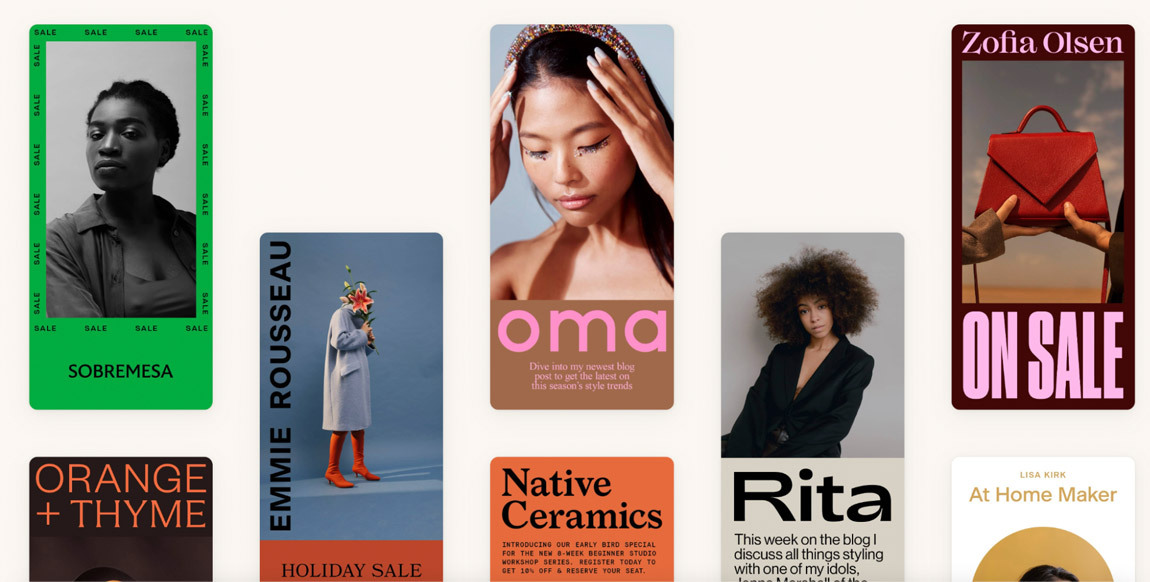
Common email list management mistakes
We gathered some expert advice about how to maintain your email list and what to avoid in the process.
“[Get] your priorities straight. I sometimes see people micro-managing their email marketing.. They do this while their flow structure is incomplete, they’re not sending enough campaigns, and their popup and welcome flow are not optimized. Realize where the biggest wins are and focus on that first!”
- Luc de Bruin, Email Marketer
Here are a few mistakes to avoid to ensure you’re making the most of growth opportunities:
- Not consistently sending emails: Email lists need to be nurtured, so make sure you send out a steady stream of content. According to email marketing specialist, Dominik Metlicic, “85% of email subscribers buy from you within the first 14 days of subscription. Send at least 10 emails in those 14 days and don’t be afraid of doing it. If you post something on social media every day and people read it, why wouldn’t your subscribers read your emails every day if you send good stuff?”
- Sending too many emails: On the flip side, too many emails is one of the biggest reasons why people unsubscribe from email marketing content. Don’t send out more than one email per day except in very special circumstances, like during the holiday season
- A lack of content diversity: Exclusively sending out promotional and sales-focused emails comes across as spammy and can negatively affect your business’s reputation. Create different kinds of emails that add value, like educational newsletters
- Optimize popups and welcome flows: This is your opportunity to impress and retain subscribers. Your first interaction should be a core focus of your email marketing efforts
- Mistakenly prioritizing subscriber count: Having a large audience is great, but not essential. An engaged email list is much more valuable than a massive email list
Not asking subscribers for their details: While you don’t want to ask subscribers for too much information, collecting key data can help you send highly personalized content that resonates with them
Your subscribers deserve good email list management
All in all, maintaining a healthy email list is all about prioritizing your subscribers’ needs. Be transparent, follow consent best practices, and send personalized content that resonates with them. Do everything you can to boost subscriber engagement, like letting your audience adjust their preferences or opt-out of your list if necessary.
Flodesk helps entrepreneurs and small businesses alike to manage, grow, and nurture their email lists. The intuitive drag-and-drop builder and stunning templates make it easy to design emails people love to get. Try it free for 30-days!
FAQs about email list management best practices
1. How should I manage my email list?
There are many best practices you should implement to make sure your email list stays healthy over time. To start:
- Use top-notch email marketing software – try Flodesk for free!
- Be transparent when subscribers opt-in
- Set up a double opt-in process
- Embrace tagging and segmentation
- Put together a welcome series for new subscribers
- Send personalized email content
- Clean up your subscriber list regularly
- Create re-engagement campaigns
- Let subscribers manage their preferences
- Don’t make unsubscribing complicated
- Encourage subscribers to get in touch with you
2. What are the best practices for email list building?
There are many things you can do to build your email list, whether you’re starting from scratch or already have subscribers. Follow these 11 steps and see the impact they can have on your list growth:
- Determine the focus of your email list
- Nail your target audience and tone of voice
- Import existing contacts (and make sure they opt-in)
- Create an eye-catching full-page form
- Add an enticing pop-up form to your website
- Promote your email list on social media channels
- Relate blog post CTAs to your email list
- Ask customers to opt-in to your email list during the checkout process
- Offer leads something valuable in exchange for opting-in
- Consider implementing a referral program
- Host a webinar’
Seeking extra inspiration? If so, learn how to grow your email list.
3. What is a good email list size?
Defining a good email list size is difficult because it depends on numerous factors, like industry and subscriber engagement. An email list with 2,000 highly engaged subscribers can be much more fruitful than an email list with 20,000 subscribers who never open emails or click on their content.
As a general rule, you’ll need an email list of at least 1,000 subscribers to start analyzing their behavior and diving into analytics.
The size of your email list can also signal how many emails you should send out. If you have less than 1,000 subscribers, don’t send more than one email per week. Companies with over 10,000 subscribers can send daily emails.
